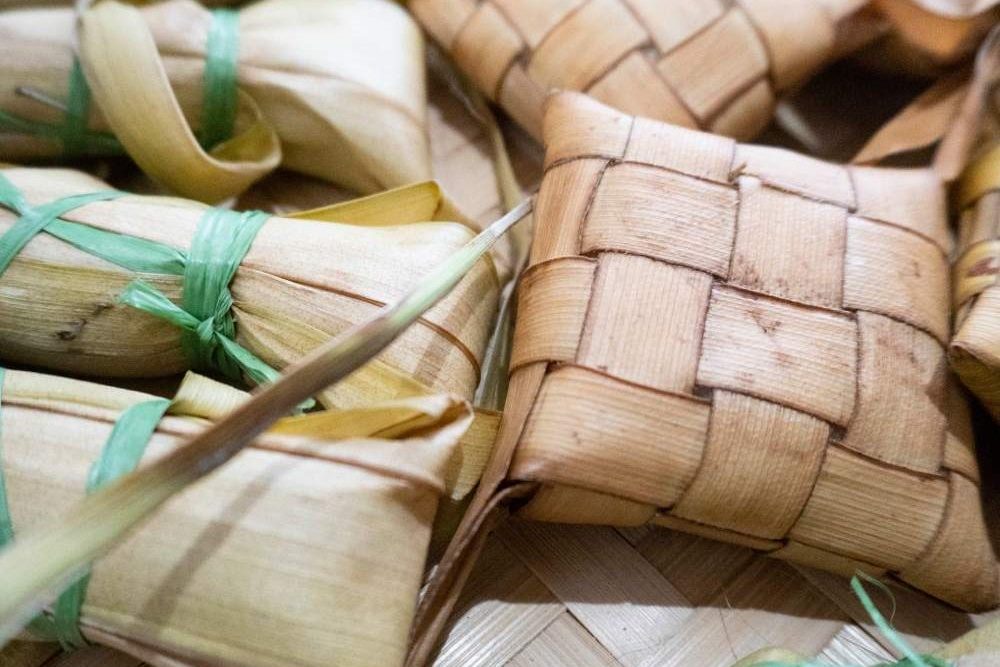
Tipat and bantal are two elements that hold profound symbolic meaning within the context of Balinese Hindu beliefs and culture. If you are familiar with the unique ceremonies of Aci Tabuh Rah Pengangon (or Siat Tipat Bantal) and Mejauman (or Mepamit), you will know that these ceremonies all share a common trait: the inclusion of tipat and bantal. These two items play an important role in religious rituals, representing the relationship between the masculine and the feminine aspects.
The tipat and bantal are both a type of traditional rice cake; each presented differently, they act as symbols in Balinese Hindu philosophy. Tipat, a reference to ketupat, is a cake of glutinous rice that is wrapped neatly inside a woven palm leaf pouch, shaped like a diamond. It is said to symbolise the feminine aspect or pradana. Additionally, it represents yoni, which is a symbol of the Goddess Parwati, the consort of Siwa. On the other hand, bantal represents the masculine aspect or purusa. These are smaller cakes, also wrapped in palm leaf but into elongated shapes tied together with bamboo string. As such, it represents the lingga, which is a symbol of Siwa. The union of the two, therefore, are considered the source of life.
The symbolic rice cakes are at the centre of two distinct rituals found in Bali. One is Aci Tabuh Rah Pengangon, sometimes referred to as the Siat Tipat Bantal, meaning the ‘Tipat Bantal War’. Taking place in Kapal Village, Mengwi, it is exactly how it sounds: the local residents will gather at the village temple (Pura Puseh) and throw these wrapped rice cakes at each other. History says this started as a ceremony to relieve the village from famine. The union of these symbols, i.e. male and female, are considered the source of life, and fertility, and thus provides us with sustenance (i.e. food). Ever since, the villagers have warded off famine with this yearly observance. An appreciation of fertility and sustenance among agrarian communities.
Another prominent use of these rice cakes is during the long process of a traditional Balinese wedding. A few days after the wedding ceremony will be the mepamitan or mejauman ceremony, where both families will meet at the bride’s parent’s house to mark the official ‘departure’ of the bride. She must ‘say goodbye’ (pamit) to her ancestral shrines, her banjar and her family before she joins her husband’s extended family. The groom’s family will bring a host of traditional cakes, especially the tipat and bantal, said to symbolise the union of the families. The groom is represented by bantal (purusa) and the bride is represented by tipat (pradana); the union forms a larger family known as mapewarangan, the shared responsibilities for the well-being of the bride and groom.






